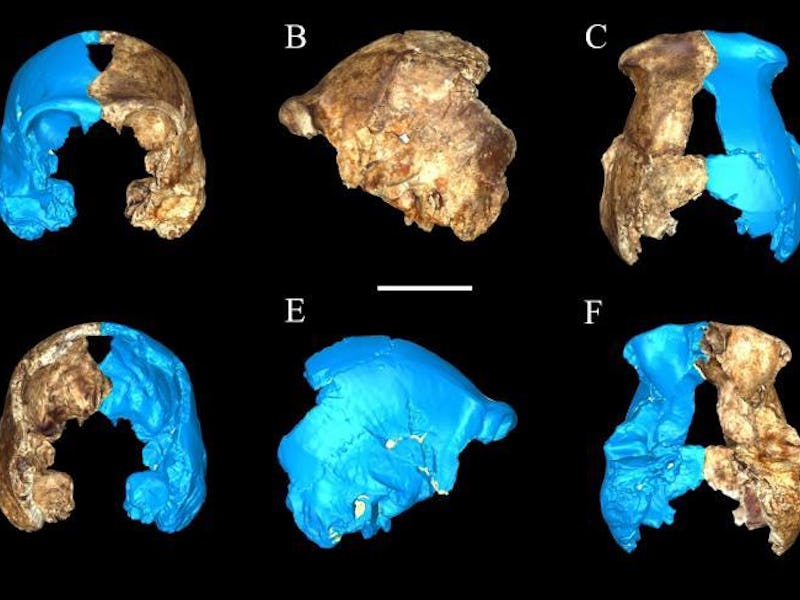South Africa's 'Homo Naledi' Hominids Could Rewrite Evolutionary History
Spelunkers found a lot of bones in an African cave. Are they a new species?

In 2013, spelunkers stumbled on a dozen ancient skeletons deep within an African cave. The several thousand ancient body parts were notable for being myriad and for being unusual. They seemed different than anything researchers had previously encountered. Now, a National Geographic-funded team, led by University of Witwatersrand’s Lee Berger, has announced that those bones belong to a new human ancestor dubbed Homo Naledi. “Naledi” means “star” in the Sesotho tongue and that’s fitting because these little guys are going to be in the spotlight for a while.
The Basics
Homo naledi, by all accounts, appears to be rather primitive: University of Colorado Denver anthropologist and study author Charles Musiba described naledi as “very petite and have the brain size of chimpanzees.” The researchers say the pelvis looks like Australopithecus but the hands and skull are closer to Homo, characteristics that they argue earns naledi’s Homo status. The known unknown keeping naledi from burning a hole through our ancient human history textbooks, however, is time. No one has yet dated these bones. Outside experts like UC Berkeley paleoanthropologist Tim White are skeptical for that reason. Based on the description, White told The Guardian, that he believes these are simply Homo erectus bones. He is not alone.
Publish or Perish or PBS?
The team published the discovery Thursday in the biomedical journal eLife — not your usual joint for groundbreaking paleoanthropology. The scientists initially approached Nature, which rejected it, as uber-selective journals are wont to do. The authors say the three-dozen-page description was just too much ancient hominid background for the prestigious publication to handle, dismissing criticism that the article was expedited in order to coincide with a documentary airing on PBS next week.
Chamber of Secrets
To get to the bottom of the cave, you have to tuck through a tiny crack with a so-called Superman’s Crawl, says National Geographic, one arm out in front of you like the Man of Steel himself. A pair of slender explorers made their way through this, through another thing called the Dragon’s Back, and then found the fossils.
The naledi team believes the density of bones here indicates burial, bodies left over generations. This, in turn, suggests symbolism and ritual — the concept of burial previously believed to go back only a few hundred thousand years.
Or it could be that the hominids collectively got stuck in the caves and died. Either way, how these primates made their way so deep underground is a mystery.